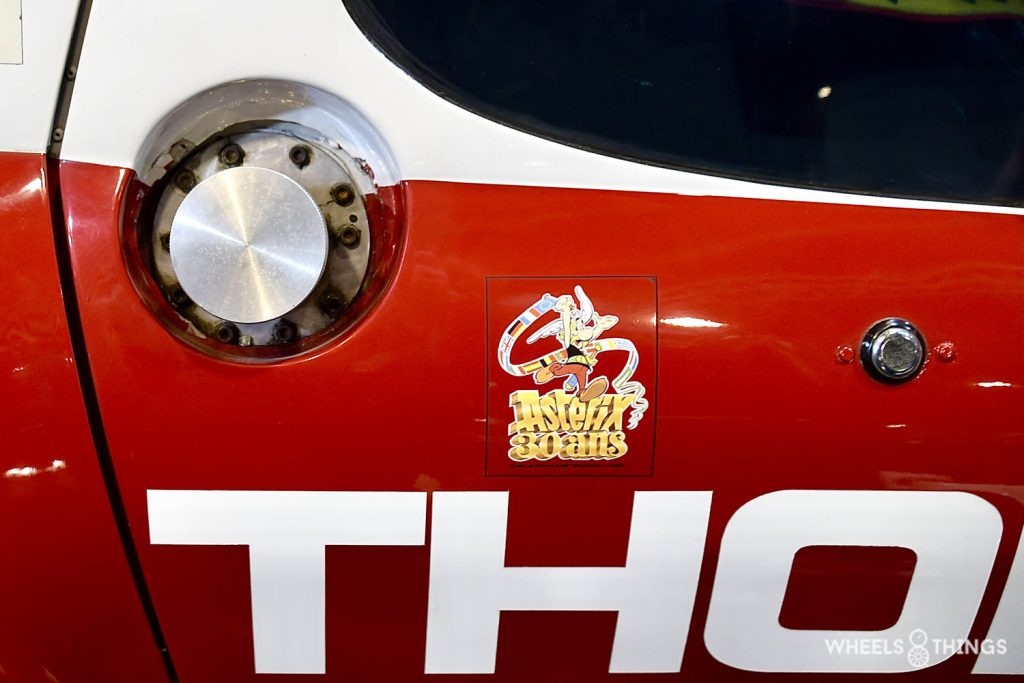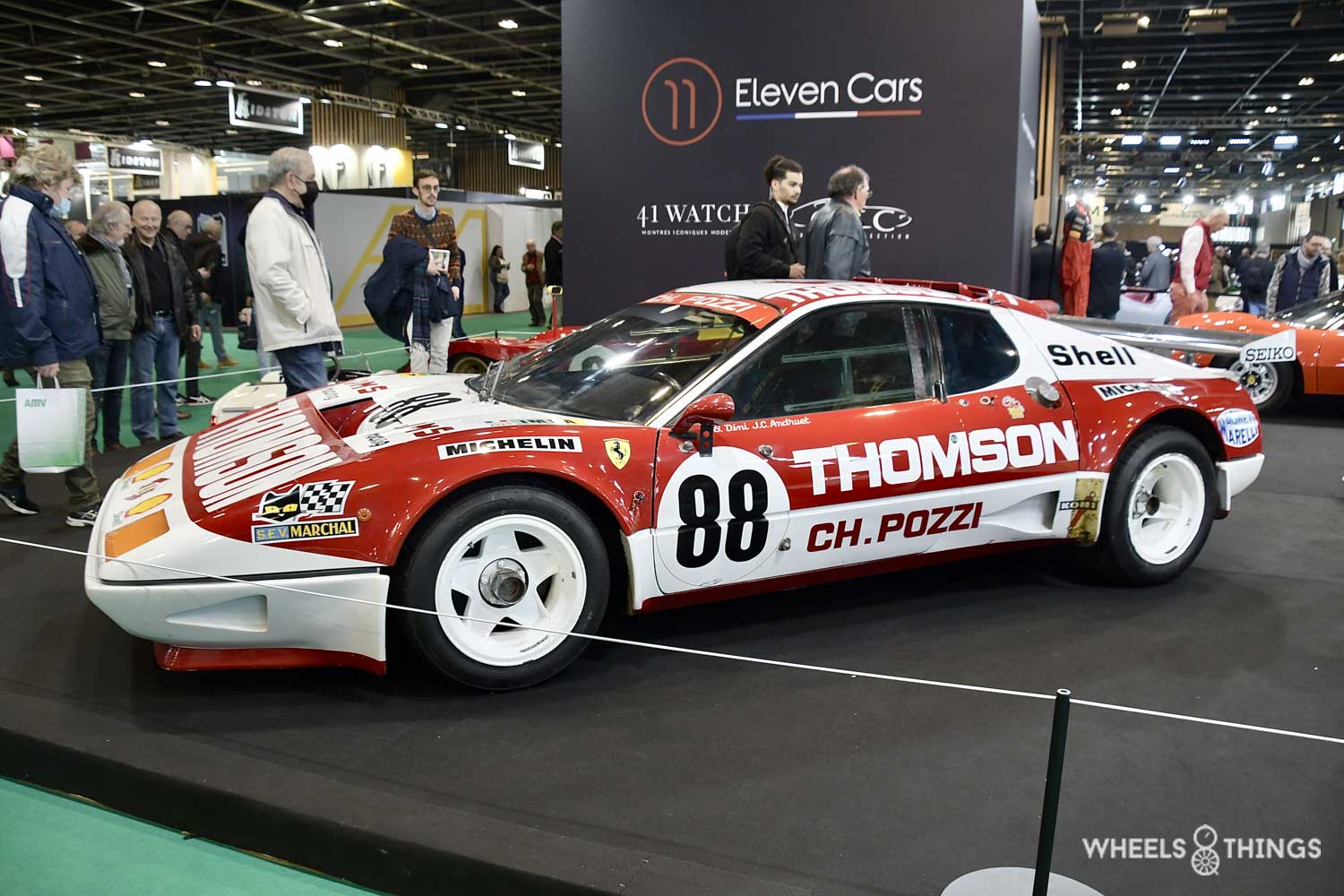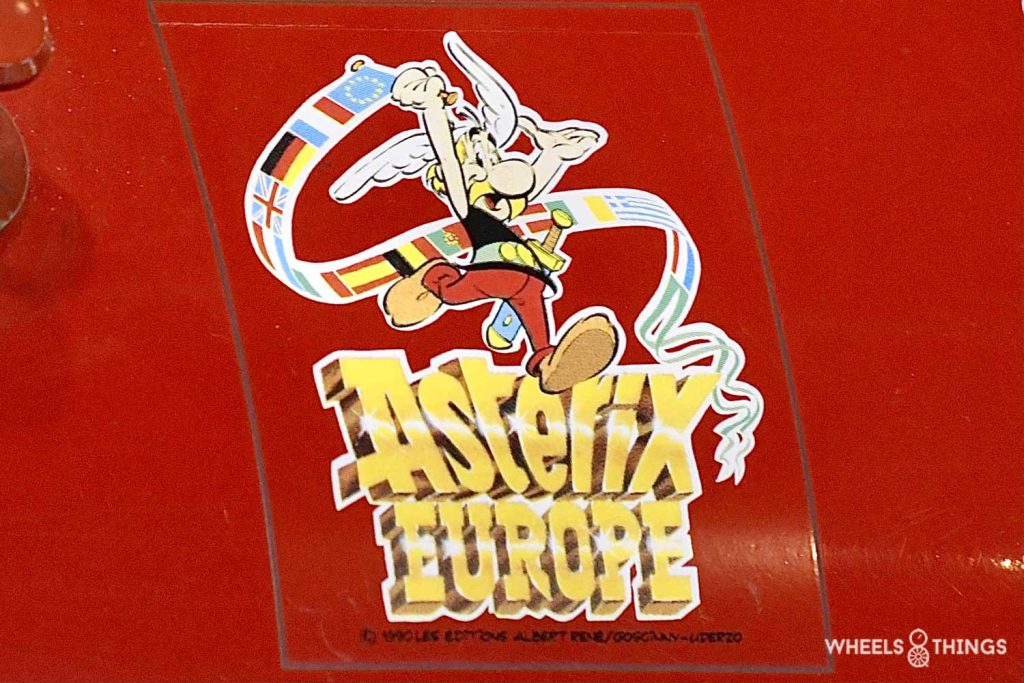
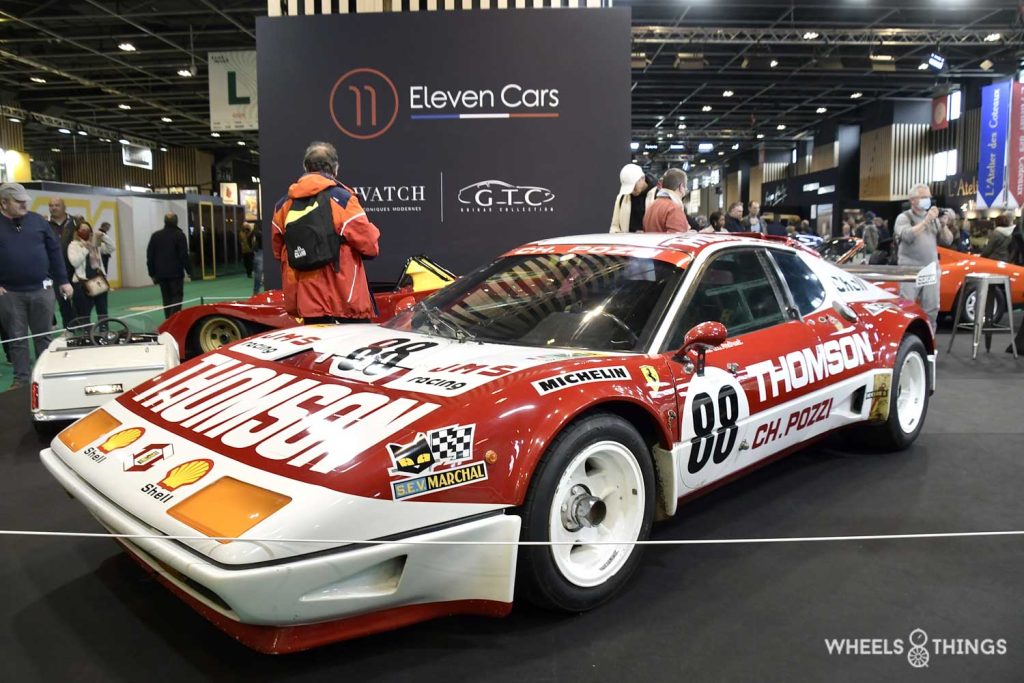
Rétromobile and exceptional cars: it remains an almost perfect marriage. We have often pointed it out: at Rétromobile you see things you don’t see anywhere else. Unique cars, which are in some collection or museum, are often brought out especially for the Paris oldtimer fair.
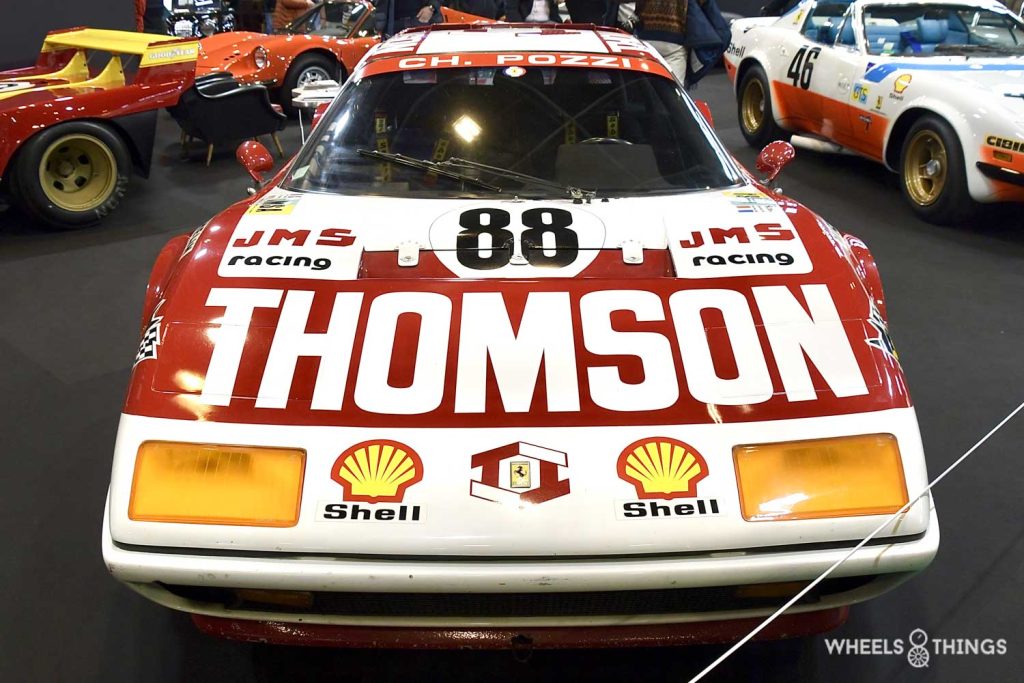
During a final covid flare-up in Europe, the 2022 edition was, by far, the least of this century. But that certainly did not mean that you could find some very nice material there after all. For instance, we saw the phenomenal expo of the Mclaren F1 that we recently reported on. Those who missed it can find more info on it here. But at other stands too, we regularly came across a classic or unique piece. At Guikas, we bumped into an ex Le Mans Ferrari 512 BB from 1978. This “Berlinetta Boxer” was fitted with a sticker from the “Park Asterix” near Paris.
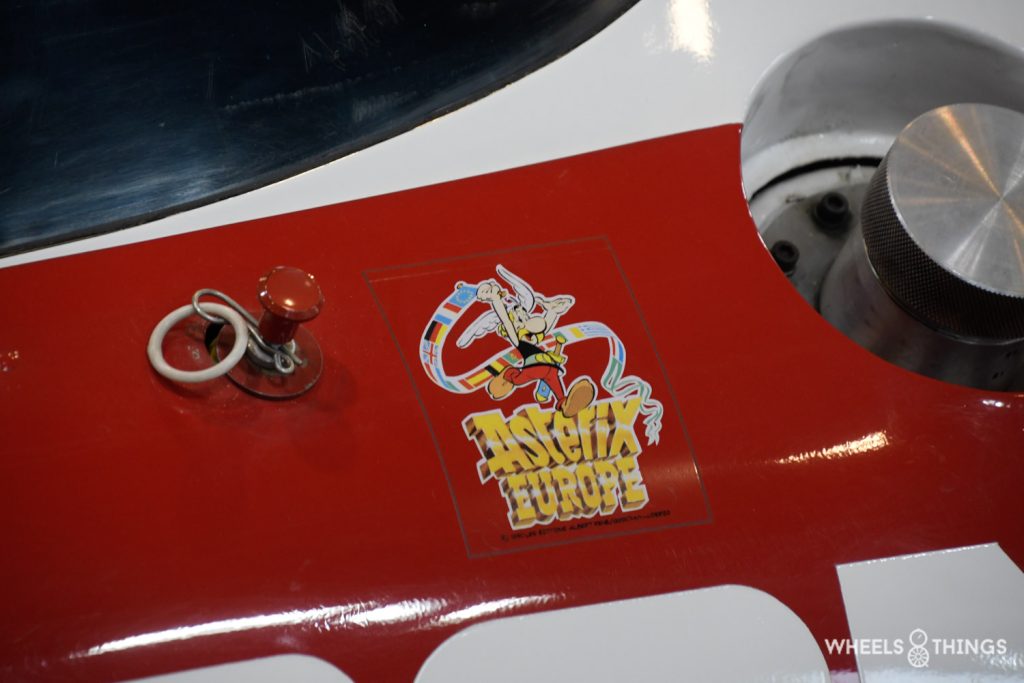
And the connection with Asterix is not far off. This 512 BB Competizione with chassis number 24127 had one Albert Uderzo as its first owner. Uderzo is better known as the illustrator of the comics of Asterix and his faithful companion Obelix. The adventures of the Gauls fighting the Roman legions have since become legendary. Drawing these comics did not do Uderzo any harm and cartoons and several films followed, including Gerard Depardieu as a perfect Obelix. Besides drawing the comics, Uderzo was a great Ferrari enthusiast. He owned almost all the track versions such as the 365GTB, 288 GTO, F40 and F40 LM, F50 and an Enzo. Besides these, he also owned a number of competition and rally cars with a 308 Michelotti Rally, a 365P and a 512M. Uderzo also took part in the Ferrari Club meetings with these Ferraris. In fact, he was also president of this club for a while. As a good Ferrari customer, he obviously had an excellent relationship with French Ferrari importer Charles Pozzi.
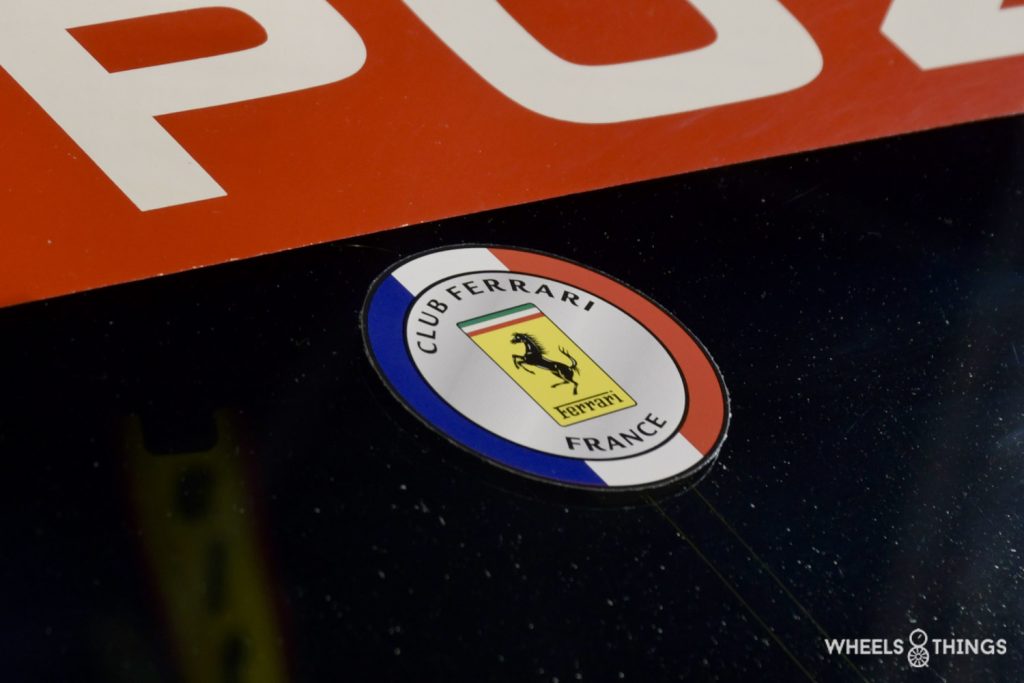
In the past, the Ferrari and Le Mans combination accounted for nine overall wins in the 24-hour classic. In addition to this, there were also more than 20 class victories. In June this year, Ferrari will even start again in the hypercar class after 50 years for the battle for overall victory.
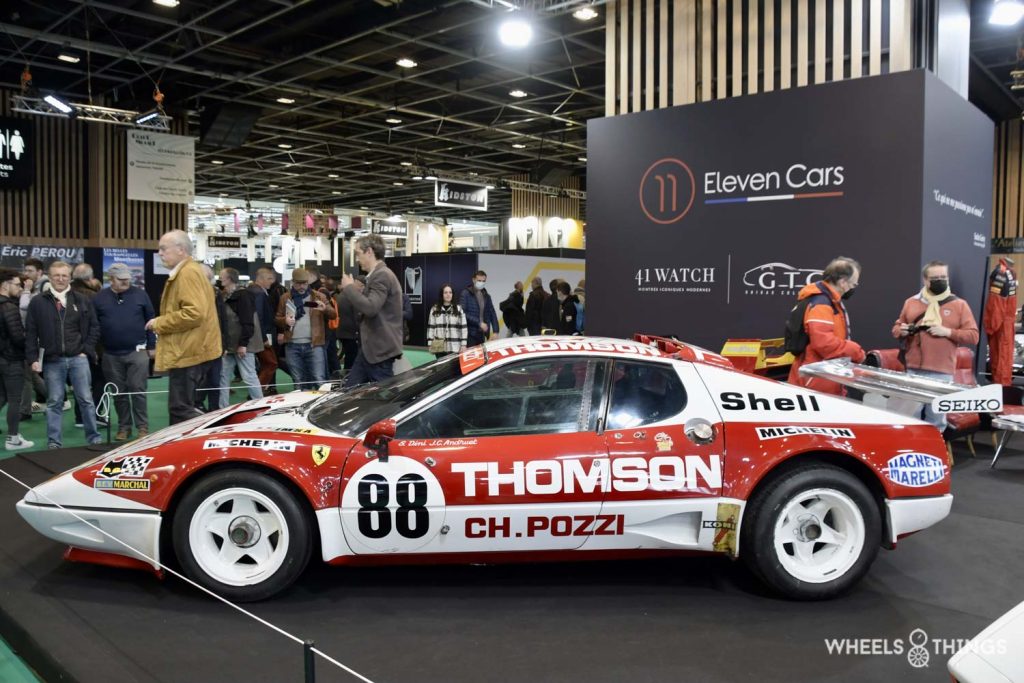
By 1978, however, the marque was in a down period. The prototype programme had ended in late 1973 and the successful 365GTB/4 had been retired after a few class wins. Its successor was the 512 BB but it was not really competitive. The Ferrari customer teams, such as French Pozzi, Belgian Garage Francorchamps and American NART, therefore begged for a worthy successor. However, Ferrari did not want to participate officially. Behind the scenes, however, they were working on a programme in which a street version could be turned into a race car, at least in a somewhat respectable way. Even the recently deceased Ferrari top designer Mauro Forghieri lent his cooperation to the project. The BB gets an aerodynamic update, the suspensions are modified and the engine department pours an extra 100 hp out of the 12-cylinder boxer engine. Excess weight is also removed as much as possible. The braking system ( one of the weaknesses on the 365 GTB/4 ) gets an update with ventilated brake discs. Nice detail: the rear wing is simply taken from a then Ferrari Formula 1 car.
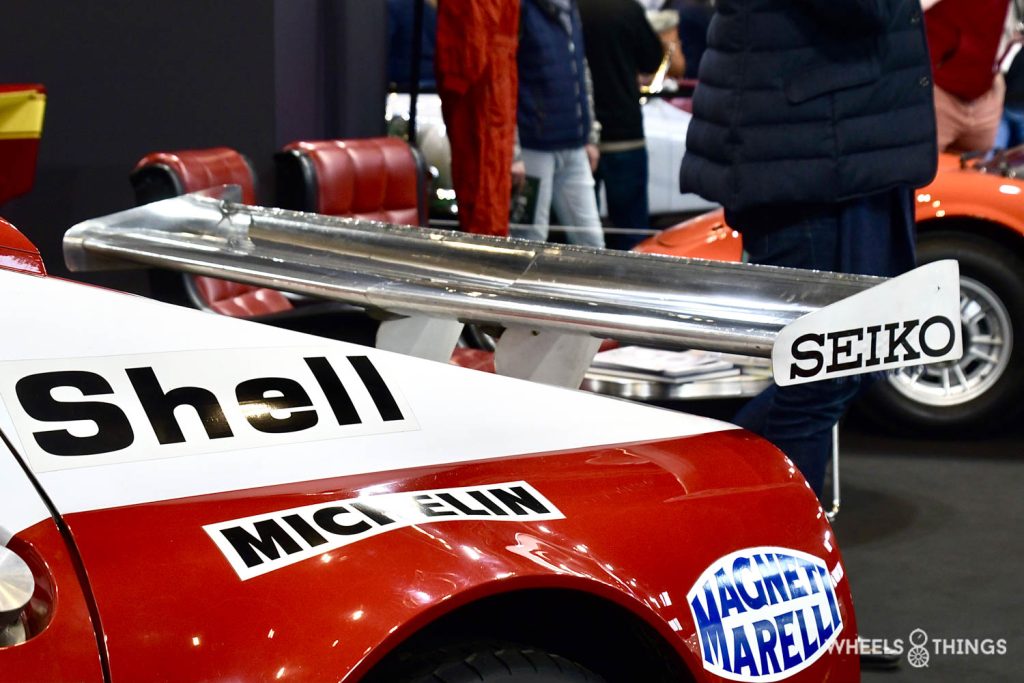
Of these modified BBs, three will take the start of the 24-hour race. Two examples in the Thompson Pozzi version ( start numbers 88 and 89 ) and one from the American Nart ( start number 86 ). A fourth BB from the Belgian Garage Francorchamps is a less evolved version that even had 100 kg more basic weight. All these BBs compete in the American IMSA class.
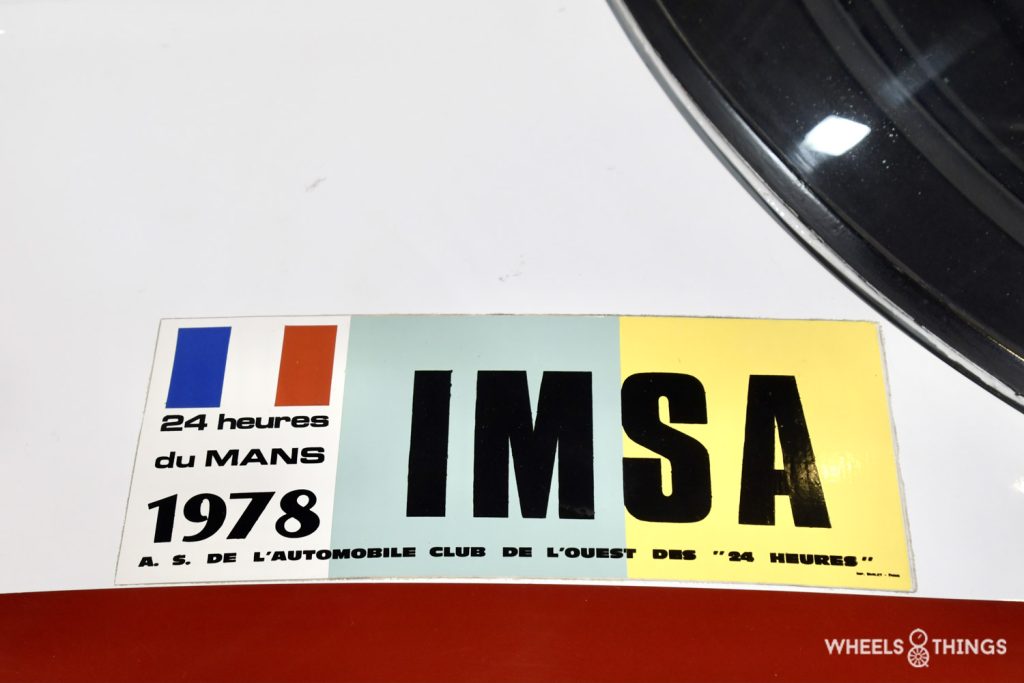
The Asterix Ferrari is this one with the start number 88 and will be driven by Frenchman Jean Claude Andruet and Italian Spartaco Dini. The latter had completed much of the development programme. Uderzo had purchased the BB 512 with chassis number 24127 and loaned the Ferrari to the Pozzi team for the race.
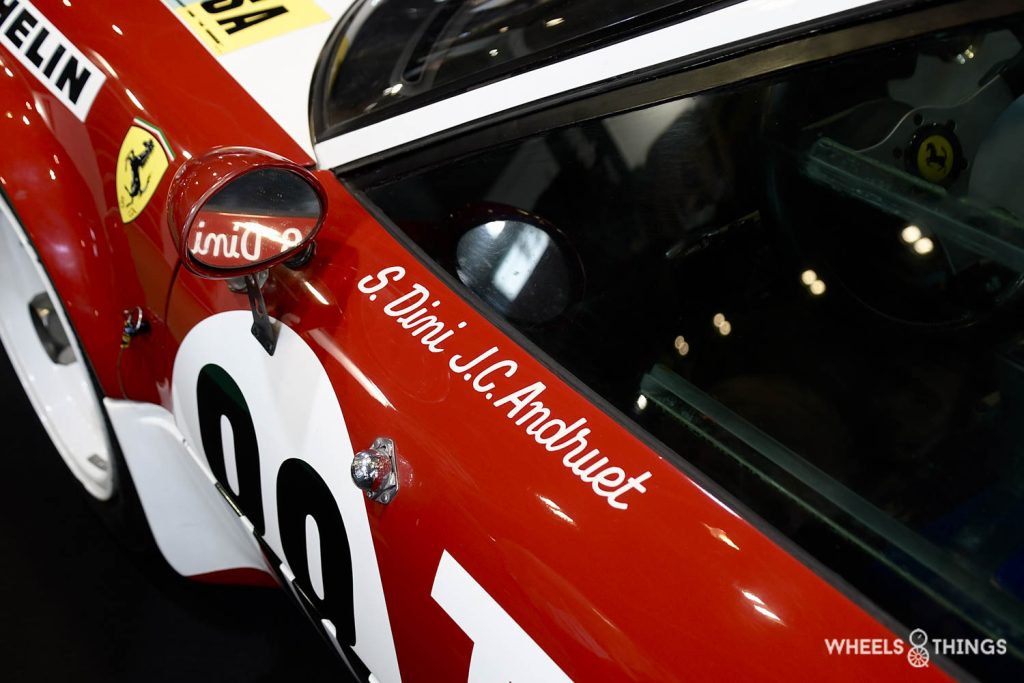
Both Ferraris of the Pozzi team qualify, fraternally side by side on the 17th row of the grid with just 2 tenths of a second difference. Andruet has to give way in the 88 against Ballot Lena in the 89. The Belgian Ferrari with Teddy Pilette at the wheel has to concede just three seconds to its French colleagues, despite extra weight and fewer evolutions. At the American NART, they are clearly already in race mode as they are still running six seconds slower than the Belgians.
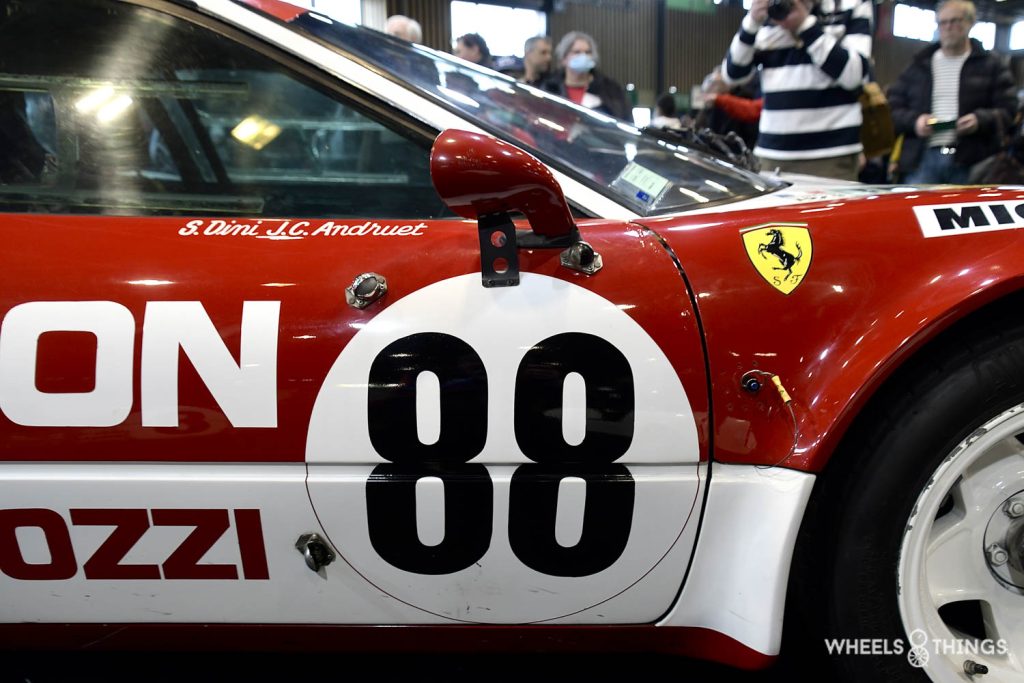
The weakness of this 512 BB surfaces after only three hours of racing: the Belgian Ferrari disappears from the race with a faulty transmission. The number 89 Pozzi climbs to place 12 in the overall standings but, after 17 hours of racing, has to retire with an identical break. The Nart Americans make it up to place 11 and last one hour longer but after 18 hours it is over and out for them too. Once again, the transmission is the cause. Only the “Uderzo” remains in the race. After 21 hours, it stops for them too. Not a transmission problem but a faulty 12-cylinder engine is the cause of the abandonment.
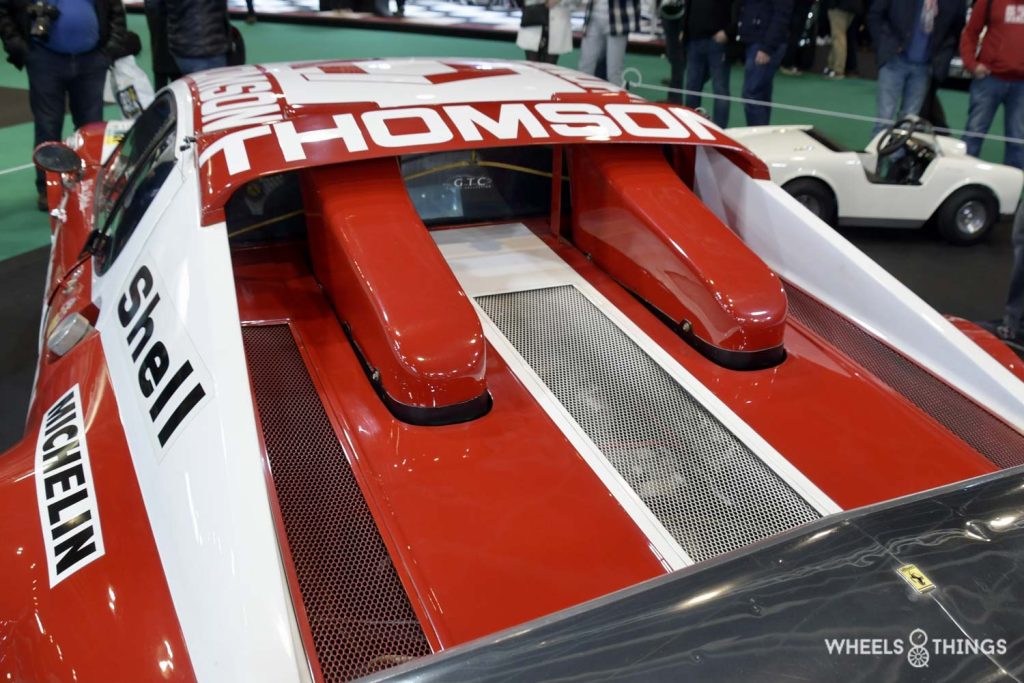
The race was won by the Renault Alpine of Pironi and Jaussaud. You can find that story here. We saw the four Renault Alpines at the 2018 Rétromobile exhibition to mark the 40th anniversary of this victory. The BB Competizione is overhauled after the race and Pozzi delivers it to Uderzo. The 512 will remain in its original Le Mans livery and will only compete once. Uderzo uses the car for participations in Ferrari Club France events. The car will be given number plate 1117 HV 92 and Uderzo can even use it for public roads. He then drives it to Ferrari meetings this way. With a free exhaust and sometimes even on slick tyres! This is unthinkable today but in the 1980s it was no problem.
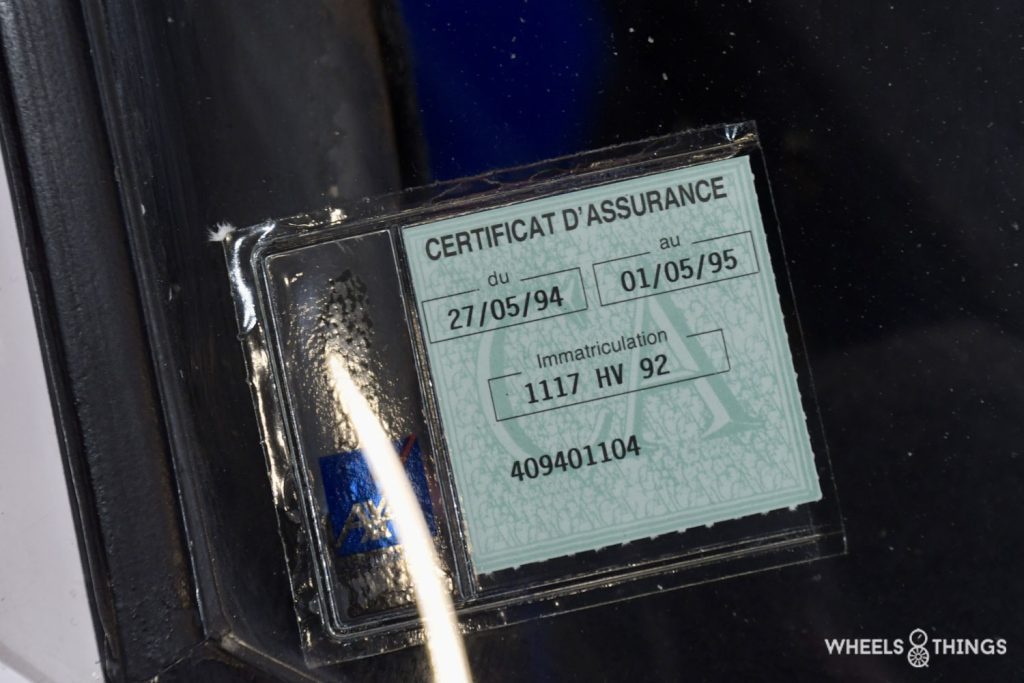
The 512 BB will no longer participate in the 24 hours of Le Mans in this configuration. Meanwhile, Ferrari had understood what its customers wanted and turned it into a real racing version with the 512 BB LM. This gets a 5-litre 12-cylinder engine and an aerodynamic bodywork by Pininfarina. The weak transmission is also completely reworked and improved. The 512 immediately looks much more spectacular. Now, even this version will not be a high-flyer. In 1979, a BMW M1 also debuts in the same class. This one takes three seconds less to complete a lap of Le Mans with its 3.5-litre 6-cylinder engine. Ferrari will not be able to close this gap in the following years either.
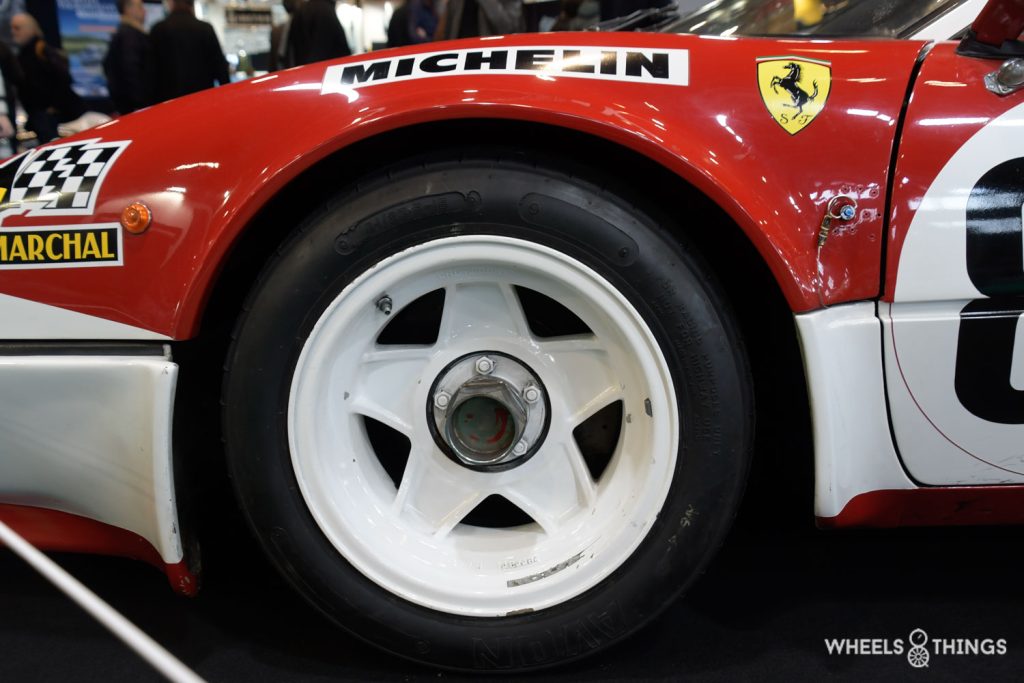
In 1996, Uderzo renounced his 512 BB and sold the car to Jean Guikas, who still cherishes it today. The image of the brave Gaul who made the adventure possible still hangs next to the petrol filler valve on the rear mudguard of the Ferrari 512. He, along with his great friend Obelix and the rest of his tribe, fiercely resisted Julius Ceasar’s Roman legions in a small Gallic village. All made possible by the magic potion of druid Panoramix. And his Ferrari 512 BB Competizione might have used that magic potion too.
